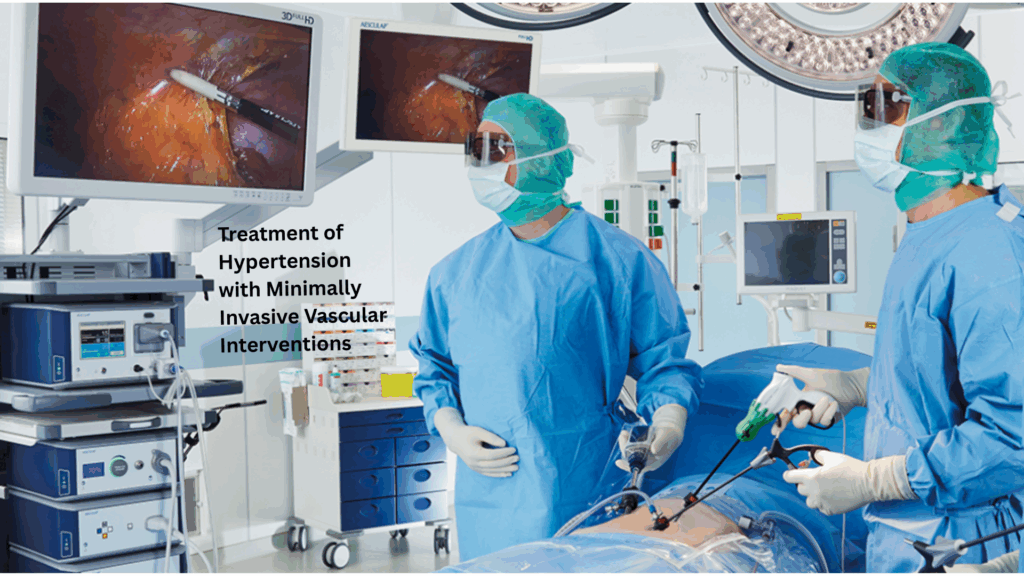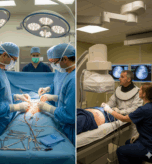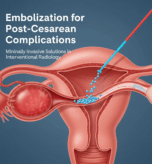
Hypertension, or high blood pressure, is associated with what many consider some of the most serious health problems worldwide. While most cases can be managed through lifestyle changes combined with medications, hypertension can sometimes directly result from blocked or narrowed blood vessels, particularly in the kidneys. In such situations, standard treatments for hypertension often fall short. Therefore, minimally invasive treatment for high blood pressure caused by blocked arteries may not only provide immediate relief but also offer better long-term control. Moreover, early intervention can help prevent further kidney damage and other complications.
This article examines how interventional radiology provides angioplasty, renal artery stenting, and other endovascular treatments for hypertension resulting from renal artery stenosis and other vascular conditions.
Understanding Vascular Hypertension
The majority of people know of “primary hypertension”, which arises gradually over time. Conversely, in some instances, the origin of reasonably high blood pressure becomes apparent — this is called secondary hypertension. One of the common vascular causes is renal artery stenosis, in which the arteries supplying blood to the kidneys become narrowed.
Interventional radiology can reduce blood flow to the kidneys, which in turn causes them to send signals that increase blood pressure, often resulting in chronic and potentially life-threatening effects of hypertension. Consequently, patients may seek treatment for secondary hypertension without undergoing open surgeries. In these cases, interventional radiology plays a major role in effectively managing the condition.
How Blocked Kidney Arteries Cause Hypertension
This mechanism explains why patients often look for how blocked kidney arteries cause high blood pressure and treatment options. Left untreated, the condition can lead to resistant hypertension, kidney damage, and increased risk of heart disease or stroke.

Minimally Invasive Treatment Options For Hypertension
Modern medicine now offers the latest minimally invasive procedures for vascular hypertension through interventional radiology. When cholesterol buildup or other vascular problems block the arteries, the kidneys sense low pressure and release hormones that raise systemic blood pressure.
1. Renal Artery Angioplasty
- The doctor inserts a catheter with a balloon tip into the narrowed artery.
- The doctor inflates the balloon to widen the artery and restore blood flow.
- Many patients search for angioplasty for kidney artery blockage and high blood pressure, as it directly addresses the root cause.
2. Renal Artery Stenting
- Often, stenting is performed alongside angioplasty to achieve better results.
- In addition, the doctor places a small metal mesh tube (stent) in the artery to keep it open.
- Furthermore, patients often wonder whether stenting effectively controls high blood pressure. Clinical studies indicate that, for selected patients with severely narrowed arteries, stenting significantly improves blood pressure control and enhances renal outcomes.
3. Endovascular Therapies for Resistant Hypertension
- Live sediment, in very strange instances, develops a resistance to hypertension because its blood pressure does not reduce considerably after administering three or more medications.
- Researchers are exploring how interventional radiology helps resistant hypertension, including techniques like renal sympathetic denervation. Though still under study, this approach holds promise.
Benefits of Minimally Invasive Treatments
Choosing the best non-surgical treatment for high blood pressure from kidney problems offers multiple benefits:
- Smaller Incisions: No large surgical cuts, reducing pain and recovery time.
- Faster Recovery: Most patients return home the same day or the next.
- Lower Risk: Less bleeding and fewer complications compared to open surgery.
- Effective Results: Improved blood flow, better blood pressure control, and protection of kidney health.
For many patients, these advantages make minimally invasive procedures the preferred choice.
So, when should you consider these treatments for hypertension?
Doctors may consider you a candidate for endovascular treatment for high blood pressure caused by renal artery stenosis if:
- Firstly, you have high blood pressure that is difficult to control with medications.
- Additionally, you have unexplained kidney dysfunction.
- Also, the doctor diagnoses you with a narrowing of the kidney arteries.
Before proceeding, your doctor may recommend imaging tests such as ultrasound, CT angiography, or MR angiography to confirm the diagnosis.
Hypertension Patient Experience and Outlook
Patients who undergo these procedures often report noticeable improvements in blood pressure levels within weeks. However, while not everyone may achieve normal blood pressure without medications, the need for multiple drugs often decreases. Furthermore, these treatments also protect long-term kidney health, thereby reducing the risk of kidney failure.
According to the National Institutes of Health (NIH), secondary hypertension should always be carefully evaluated, as treating the underlying cause often leads to better overall health outcomes. Similarly, Mayo Clinic emphasises the importance of recognising vascular-related hypertension early to prevent complications.
Why Choose Interventional Radiology For Hypertension?
Interventional radiologists are experts in performing the latest minimally invasive procedures for vascular hypertension. Their specialised training allows them to diagnose and treat complex vascular conditions with high precision. By working closely with cardiologists, nephrologists, and primary care doctors, they provide holistic care to patients suffering from difficult-to-control high blood pressure.
Suppose you want to learn more about specialised interventional treatments for high blood pressure. In that case, you can visit Dr Vrishit Saraswat’s service page for details on patient-focused care and advanced treatment options.
Final Thoughts
High blood pressure is often called the “silent killer,” but when it has an underlying vascular cause like renal artery stenosis, addressing that cause can make all the difference. Minimally invasive treatment for high blood pressure caused by blocked arteries, such as angioplasty and stenting, provides patients with safe, effective, and long-lasting relief.
For those struggling with resistant hypertension or looking for treatment options for secondary hypertension without open surgery, interventional radiology is bringing hope through innovative and less invasive solutions. With proper diagnosis and timely treatment, patients can expect healthier blood pressure levels and an improved quality of life.
———————————————————————————————-
FAQs
Q1: What are the interventions for hypertension?
A: Hypertension (high blood pressure) can be managed when patients adopt lifestyle changes—such as reducing salt, staying active, managing weight, limiting alcohol, quitting smoking, and reducing stress—and take medications like ACE inhibitors, beta-blockers, calcium channel blockers, or diuretics. In resistant cases, doctors may recommend minimally invasive vascular procedures.
Q2: Can lack of sleep raise blood pressure?
A: Yes. Poor sleep or chronic sleep deprivation disrupts the body’s stress hormones and increases sympathetic nervous system activity, which can cause blood pressure to rise. Over time, this can contribute to sustained hypertension and increase the risk of heart disease and stroke.
Q3: Can hypertension be reversed?
A: Although hypertension cannot always be fully reversed, it can be effectively controlled. In early or mild cases, lifestyle changes—such as diet modification, regular physical activity, and weight management—can help normalize blood pressure. However, for chronic or severe cases, medications are often required in addition to lifestyle adjustments. With consistent management, many patients can successfully bring their blood pressure within a healthy range.
Q4: What is the first line of treatment for hypertension?
A: Initially, treatment focuses on lifestyle changes, such as reducing sodium, exercising regularly, eating a balanced diet, and maintaining a healthy weight. If these measures are insufficient, doctors may prescribe medications like thiazide diuretics, ACE inhibitors, or calcium channel blockers. Additionally, combining lifestyle changes with medications often improves blood pressure control and long-term health outcomes.
Q5: Does walking lower blood pressure?
A: Yes. Regular walking and other forms of moderate aerobic exercise improve heart health and help blood vessels relax, which lowers blood pressure. Just 30 minutes of brisk walking most days of the week can significantly reduce both systolic and diastolic blood pressure, especially in people with mild to moderate high blood pressure.






